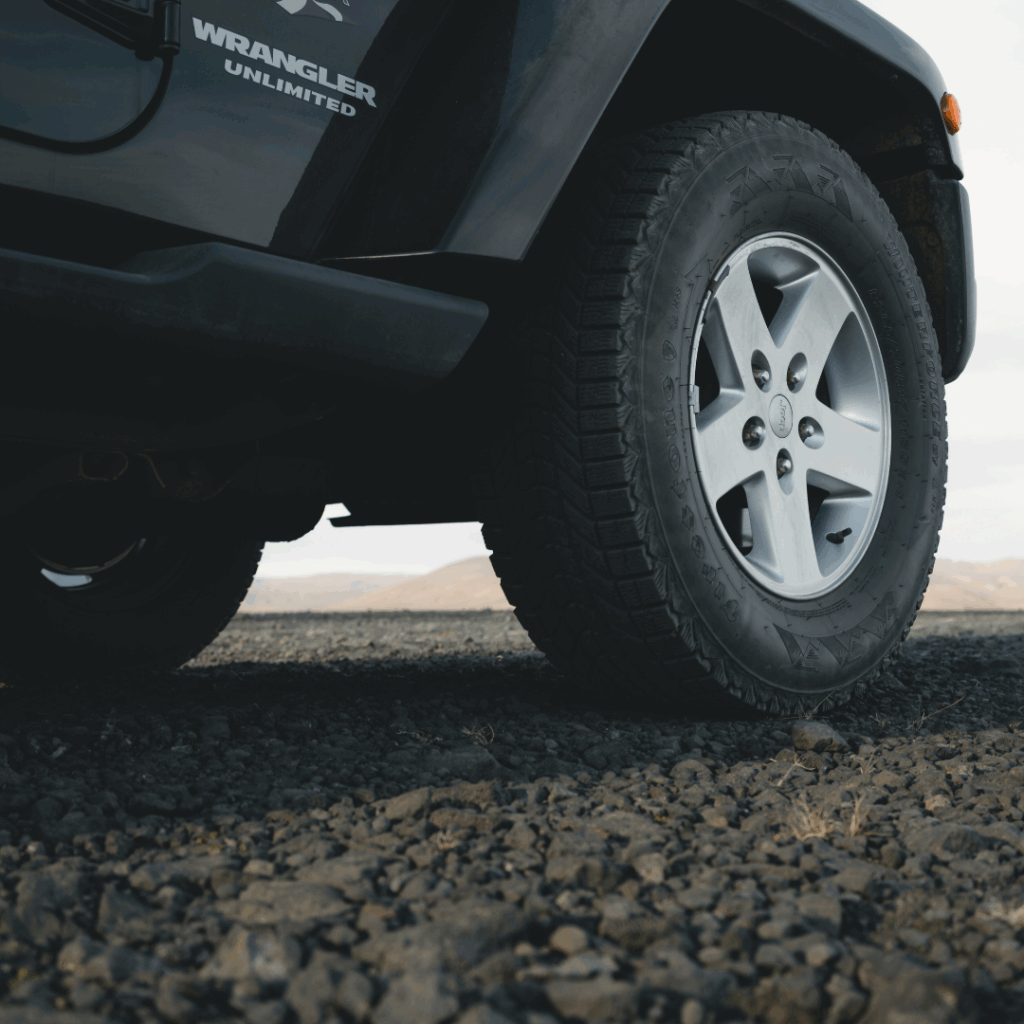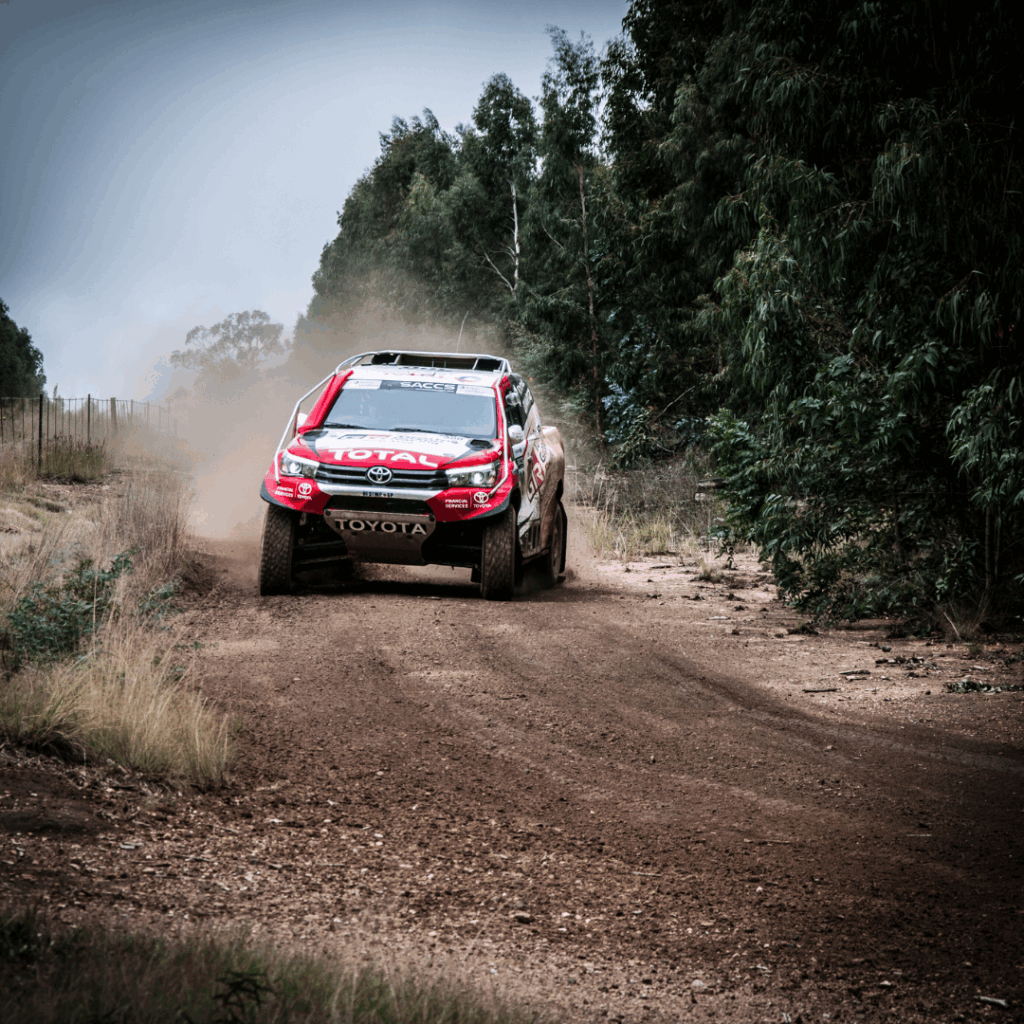From Clunking To Shakes: 5 Top Signs Of Bad Tie Rods
Owning a car means paying attention to all its parts, big and small, to ensure a smooth, safe driving experience. Among the many components that keep your car operating smoothly, tie rods are crucial, though they often go unnoticed until something goes wrong. Understanding the signs of bad tie rods can help you address issues with your steering, tire wear, and overall vehicle safety. But how can you tell when it’s time to replace them? Don’t worry—we’ve got you covered.
In this article, we’ll discuss the top 5 warning signs of bad tie rods in your car, why they matter, and what you can do about them. We’ll also highlight how Great Auto Parts, with over 30 years of experience, produces high-quality tie rod ends and other essential components, ensuring your vehicle remains safe and reliable.
What are Tie Rods
Before diving into the warning signs, let’s briefly discuss what tie rods are and why they are essential. Tie rods are crucial components of your car’s steering system. They connect the steering rack to the steering knuckle on the wheels, allowing you to steer your car accurately. They work in conjunction with other steering and suspension components, such as control arms, ball joints, and stabilizer links, to ensure the vehicle remains stable, even on uneven surfaces.
The tie rod consists of an inner and outer end. The inner tie rod connects to the steering rack, while the outer one connects to the steering knuckle. Over time, tie rods can wear out due to constant use, exposure to the elements, and road conditions. Worn or damaged tie rods can cause various issues that may affect your driving experience and safety.
The Role of Tie Rods in Steering and Suspension
The steering system in your vehicle relies on tie rods to transfer motion from your steering wheel to the car’s wheels. As you turn the steering wheel, the tie rods move the front wheels left or right. Without them, your vehicle would lose its ability to steer properly.
In addition to steering, tie rods play an essential role in maintaining proper wheel alignment. Misaligned wheels can lead to uneven tire wear, poor handling, and increased fuel consumption. Therefore, keeping your tie rods in good condition is critical for maintaining optimal vehicle performance.
At Great Auto Parts, we understand the importance of tie rods in the overall functionality of your car. That’s why we manufacture durable and reliable tie rod ends, ensuring your car’s steering system operates smoothly and safely. For more information on related parts, check out our page on Steering System.
Top 5 Warning Signs of Bad Tie Rods in Your Car
Steering Wheel Vibration
One of the most common and early signs of bad tie rods is steering wheel vibration. When tie rods wear out, they can no longer maintain a firm connection between the steering rack and the wheels. This leads to slack or looseness in the steering mechanism, which causes the steering wheel to vibrate. You may notice this especially when driving at high speeds or on uneven roads.
This vibration can often be subtle at first, but it will intensify as the tie rods continue to wear. You may notice the steering wheel shakes more when you make turns or drive over bumps. This is a clear indication that your tie rods are no longer functioning correctly, and you should have them inspected.
At Great Auto Parts, we ensure that our tie rod ends are manufactured to the highest standards, which reduces the risk of premature wear and provides smooth steering performance. Our IATF 16949:2016 certification guarantees that we subject every tie rod we produce to rigorous testing for durability and reliability.
Poor Steering Response
Have you ever turned your steering wheel only to feel a delay or sloppiness in how your car responds? This is another clear sign that your tie rods may be worn or damaged. When tie rods are functioning correctly, your steering should feel precise and responsive. However, if there’s wear or looseness in them, you may experience poor steering response.
Worn tie rods can lead to a feeling of “play” in the steering wheel. In other words, you may notice that your car doesn’t immediately respond when you turn the wheel, or it may feel like the steering wheel is loose. This can be especially dangerous when driving at high speeds or making quick turns, as a lack of control can increase the risk of accidents.
At Great Auto Parts, we design our tie rod ends and other steering components with precision engineering to ensure smooth and accurate steering. Our technical and manufacturing team engages in large-scale production of mature auto chassis parts, which ensures that each part meets stringent quality standards for reliability.
Uneven Tire Wear
Tires are a vital part of your car’s safety and performance, but they can also tell you a lot about the condition of your suspension and steering components. If you notice that your tires are wearing unevenly—particularly if the inside or outside edges are wearing faster than the rest of the tire—bad tie rods could be the cause.
When tie rods wear out, they can no longer keep the wheels aligned properly. Misalignment leads to uneven pressure on the tires, which causes them to wear down unevenly. Over time, this uneven wear can reduce the lifespan of your tires and negatively impact your car’s handling and fuel efficiency.
Regularly checking your tires for uneven wear is a good habit that can help you catch tie rod issues early. If you notice uneven tire wear, have your suspension and steering system inspected immediately to prevent further damage.
At Great Auto Parts, we manufacture high-quality control arms, bushings, and tie rod ends that help maintain proper wheel alignment, reducing the risk of uneven tire wear and extending the life of your tires.
Squeaking or Clunking Noises
Strange noises while driving are often a sign that something in your car is amiss. Signs of bad tie rods can include squeaking or clunking noises, particularly when you turn or drive over bumps. These noises occur because the tie rods can no longer maintain a solid connection between the steering components, leading to metal-on-metal contact.
A worn tie rod end can create a knocking or clunking sound when the joint becomes loose. You may hear these noises more prominently when making sharp turns or navigating uneven terrain. If you leave these issues unchecked, the noises will only get worse as the tie rods continue to degrade.
At Great Auto Parts, we pride ourselves on producing tie rod ends and stabilizer links that are built to withstand wear and tear. Our rigorous step-by-step manufacturing processes, combined with first-class production equipment, ensure that our parts meet the highest standards of quality and reliability. This helps prevent premature failure and annoying noises.
Vehicle Pulling to One Side
If you’ve ever noticed your car pulling to one side while driving on a straight road, it could be a sign of bad tie rods. Worn or damaged tie rods can throw off your vehicle’s alignment, which causes it to drift to one side, even when the steering wheel is straight.
This issue can also lead to increased tire wear and reduced fuel efficiency, as your vehicle is no longer aligned properly. Pulling to one side can be dangerous, especially at high speeds, as it can make controlling the vehicle more challenging. To fix this issue, have a professional check your tie rods and alignment. Replacing worn tie rods and realigning your vehicle will restore its stability and improve handling.
At Great Auto Parts, we use advanced technologies like Smart Factory Management 4.0 and robotic arms to improve our productivity and precision. This ensures that every tie rod we manufacture meets strict quality standards. Our vertically integrated production process allows us to control every step, from raw material receipt to final product shipment, which guarantees that our tie rods provide excellent performance and durability.
How to Inspect Tie Rods: Visual and Physical Inspection Charts
Inspecting your tie rods regularly is crucial for maintaining your vehicle’s steering system. A bad tie rod can compromise your car’s handling and safety, so knowing how to check them can save you from costly repairs and dangerous driving conditions. Below are two inspection charts—Visual Inspection and Physical Inspection—to guide you through a basic tie rod assessment. If you notice any of these signs, it’s best to consult a mechanic or replace the tie rods. For a more comprehensive guide to vehicle checks, visit a reputable resource like Car Talk
How to Perform The Inspections
To conduct a thorough inspection of your tie rods, follow these steps:
- Raise the Vehicle: Use a jack or lift to safely raise your car off the ground. Ensure the car is securely supported with jack stands.
- Check for Play: Grab the tire at the 9 o’clock and 3 o’clock positions and gently shake it back and forth. If you feel excessive play, your tie rods may be loose or worn.
- Inspect the Rubber Boot: Look at the rubber dust boots around the tie rod ends for cracks, tears, or leaks. Damaged boots allow dirt and moisture into the joint, which causes wear.
- Move the Tie Rod by Hand: Try to move the tie rod. It should feel firm and resistant. If it feels loose or wobbly, it’s likely worn out and needs replacement.
- Test Drive for Alignment: While driving, check if the vehicle pulls to one side or if the steering feels “loose” or unresponsive. These are strong indicators of bad tie rods.
At Great Auto Parts, we ensure that our tie rods are designed to withstand rigorous use, which minimizes the need for frequent inspections and replacements. Our high-quality manufacturing process ensures that our tie rod ends provide smooth and reliable steering for your vehicle, helping you avoid these common issues.
Visual Inspection Chart for Bad Tie Rods
| Inspection Point | What to Look For | Action |
| Boot or Dust Cover Condition | Check for cracks, tears, or damage to the rubber boot covering the tie rod joint. | If the boot is damaged, contaminants like dirt and moisture can enter the joint. You should replace the boot or the entire tie rod. |
| Rust or Corrosion | Look for rust on the tie rod ends or surrounding components. | Rust indicates wear and can weaken the tie rod. Consider replacement if rust is extensive. |
| Joint Grease Leakage | Inspect for grease leaking from the tie rod end. | Leaking grease suggests the joint is losing lubrication, which leads to wear. You should replace the tie rod. |
| Excessive Tire Wear | Check the inside and outside edges of the tires for uneven wear. | Uneven tire wear is a strong indicator of misalignment caused by bad tie rods. You should replace the tie rods and realign the tires. |
| Bent or Damaged Tie Rods | Look for any visible bends or deformations in the tie rods. | You must replace bent or visibly damaged tie rods immediately for safety reasons. |
| Loose or Missing Components | Inspect for missing nuts, bolts, or other fasteners. | Missing or loose components can cause the tie rods to fail. Tighten or replace as necessary. |
Physical Inspection Chart for Bad Tie Rods
| Inspection Point | What to Look For | Action |
| Steering Play (with Car Lifted) | Gently shake the tire back and forth while the car is lifted. Excessive play or movement suggests loose tie rods. | If you notice movement in the tire or wheel, the tie rods may be worn out. You should replace them immediately. |
| Joint Stiffness or Looseness | Move the tie rod by hand. It should feel firm with slight resistance. | If the tie rod feels too loose or too stiff, it may be failing. You should consider replacing the tie rod. |
| Noise When Steering | Turn the steering wheel while the car is stationary. Listen for clunking, clicking, or squeaking noises. | Noises during steering are a clear sign of worn tie rods. You should replace them if necessary. |
| Alignment Check | Drive the car on a straight road and release the steering wheel. See if the car pulls to one side. | If the car pulls, it could indicate bad tie rods or misalignment. Have a professional check the tie rods and alignment. |
| Vibration in Steering Wheel | While driving, feel for unusual vibrations in the steering wheel, particularly at higher speeds. | Steering wheel vibration is another common indicator of worn or damaged tie rods. Have them inspected and replaced if needed. |
Why Regular Tie Rod Maintenance is Essential
Ignoring the warning signs of bad tie rods can lead to more severe issues down the road. Not only will your car’s handling and steering be compromised, but you also risk damaging other components of your suspension system, such as control arms, ball joints, and bushings.
At Great Auto Parts, we understand the importance of maintaining your vehicle’s steering and suspension components. That’s why we produce high-quality, durable car parts, such as tie rod ends, ball joints, control arms, and more. Our products are designed to withstand the rigors of daily driving and provide long-lasting performance.
Our IATF 16949:2016 certification ensures that every product we manufacture meets the highest standards of quality and reliability. With over 30 years of experience in the industry, Great Auto Parts is a trusted name in producing auto chassis parts that keep your vehicle safe and reliable.
Conclusion: Act Fast to Keep Your Car Safe
Tie rods play a critical role in your car’s steering and suspension system. Ignoring the signs of bad tie rods can lead to serious safety issues, including loss of steering control, uneven tire wear, and poor vehicle alignment. By being aware of the top 5 warning signs—steering wheel vibration, poor steering response, uneven tire wear, squeaking or clunking noises, and vehicle pulling to one side—you can catch problems early and ensure your car remains safe to drive.
At Great Auto Parts, we are dedicated to providing high-quality auto parts that you can rely on. With our state-of-the-art production facilities, certified professional staff, and commitment to quality, we are proud to be a leading supplier of tie rod ends, ball joints, control arms, and other essential components. Whether you’re replacing worn parts or upgrading your vehicle’s suspension, trust Great Auto Parts for the durability and reliability your car needs.
So, the next time you notice any of these warning signs in your vehicle, don’t wait—


